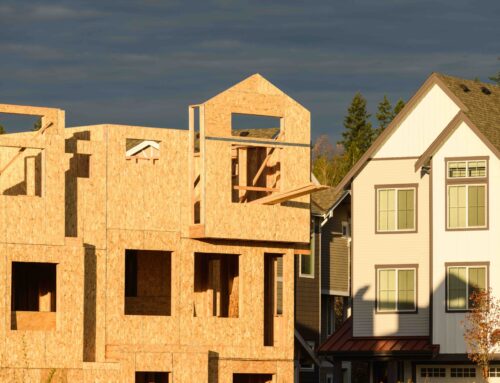Like any major market disruption, the COVID-19 pandemic has created its share of winners and the less fortunate across the real estate economy. Generally, the residential sector has outperformed many other industries; however, a closer look at moving behaviors has found that not all buying and selling is steady across the nation.
According to realtor.com®’s Top Housing Markets of 2021 list, the hottest cities are the smaller population centers, including several state capitals, that have not yet seen the dramatic price increases of pre-pandemic cities such as San Francisco or Seattle. For instance, the greater Sacramento, Calif., region stands much to gain from its growing government and technology sector as well as its supply of quality inventory. It leads the forecast with a 17.2 percent year-over-year gain in sales and a 7.4 percent gain in year-over-year price growth.
Gil Torres, broker/owner, says he’s been seeing the demand grow throughout the pandemic as employers from the technology industry adapt to working from home and seek out more space around the suburban outskirts of Sacramento all the way up to Lake Tahoe.
“The biggest influx has been from the Bay Area,” Torres says. “We are seeing a lot of the Silicon Valley coming here—a lot of cash buyers. I’ve been networking with a lot of Bay Area agents… In the Bay Area they’re not getting multiple offers any more, and listings are spending more days on the market.”
The sudden market correction in and around San Francisco has been emblematic for some metropolitan centers, including Manhattan and Seattle. Torres says it’s been one of the few hurdles for his team lately as buyers aren’t getting their expected windfalls from the sale of their Bay Area home. Still, with low interest rates, he says the market is expected to stay hot throughout the year.
Jo Garner who works in the mortgage industry in Tennessee says she expects rates to remain low in the first quarter and start to inch up in the second quarter. However, there has been so much demand with people moving and refinancing that she doesn’t think the available rates will spike as a result.
In the Memphis area, Garner says most of the buying activity is from people expanding their square footage to live with older family members while staying relatively close to their original neighborhoods. A recent study from the National Association of REALTORS® found that multigenerational home-buying went up once the pandemic hit the U.S. by 15 percent versus the 11 percent who purchased before April.
The state has also had more than its share of new residents. According to a U-Haul study, Tennessee became the No. 1 state for rented one-way U-Haul orders last year, surpassing multi-year favorites Florida and Texas. Garner says many of her clients have relocated from California, which is consistent with the U-Haul report that found the Golden State to be near the bottom of the list.
Working From Home
Macro-factors—such as recovering employment, taxes and a vaccine to get COVID-19 under control—will be driving the market for the foreseeable future as well. However, it’s the more individually based motivations triggered by recent mandates to work from home that will drive moving decisions for many new buyers and sellers.
“The trend of working from home is going to continue. Even if we get everybody vaccinated and build up heard immunity, people have discovered they don’t have to go into an office every day,” says Nina Hollander, a broker in Charlotte, N.C., a city projected by realtor.com to be third in the nation with a 13.8 percent gain in sales and 5.2 percent gain in price.
Hollander says working from home has been an eye-opening experience for many of her clients. She’s been working with a variety of homebuyers who noticed they want more space after quarantining for much of 2020. It’s a behavior pattern that’s been playing out on the West Coast as well, according to Matthew Gardner, chief economist for a brokerage in Seattle.
“What do you do when you look at anything too much? You get bored,” Gardner says. “For a lot of people, they’re looking around and saying, ‘I wish my living room was larger.'”
However, that doesn’t mean everyone will want to make a drastic move to rural areas where their money will go indefinitely farther. Nor will they flock to the tropical paradises of Florida or Hawaii.
“We’re not going to move to the wild blue yonder. We’re going to an adjoining county and getting a great house, and we’ll put up with the commute a couple times a week,” Gardner says.
Hollander says most of her clients in and around Charlotte are staying close but upgrading their neighborhoods and buying larger spaces that have dedicated home offices. The plan, she says, is for them to maintain their lifestyle from within striking distance of their office, while only commuting there occasionally.
“When the worst of the pandemic is over, some percentage will work from home all of the time and some percentage of the population will work from home at least part of the time,” Hollander says.
Like many American cities, Charlotte has seen its center business district, known as Uptown, struggle while every other neighborhood and suburb thrive. Hollander says it’s because some have left the employment center, which is anchored by the Bank of America headquarters, for suburban areas of Charlotte plus newcomers from the traditional destinations of New York and Connecticut are simply passing on Uptown all together.
While Charlotte has come of age in recent years, buyers are moving to smaller towns as well. Jill Goldman, director of Sales for a team in Kennett Square, Pa., says new residents are moving in for the extra space that they can’t find in the cities—and some are thinking about moving to warmer climates.
“What we are seeing so far are buyers from this region buying homes in the suburbs with more room for swimming pools, hot tubs and with proximity to better shopping. Some buyers are coming from Philadelphia and others are buying homes that will accommodate a home office,” Goldman says. “As far as buyers moving to other regions, I have certainly heard people discussing relocating to warmer areas or areas near their extended family since they can work remotely, but I am also hearing people say that they are approaching the idea with caution to be sure that working remotely is going to be permanently allowed at their jobs.”
Goldman adds that many are renovating and/or buying investment properties with an eye toward converting them into short-term rentals for passive revenue. However, working from home and the possibility of cutting one’s commute could be the longer-term market driver.
“I feel that once the workforce has a better understanding of whether working remotely is here to stay, we will see moves motivated by lifestyle (like moving near family or choosing a warmer climate), and we will likely see renovations that will include true home offices and personal recreational amenities like home pools and gyms become the norm,” Goldman says. “The ability to work remotely is a silver lining of the tragedy of the pandemic that will likely impact real estate for a long time to come.”
The Cost of Commuting
When one does the math on commuting, the numbers definitely add up. Gardner notes that workers who leave their expensive apartments in a city’s central business district for bigger homes on the outskirts of town might gain an hour on their commute. However, if they’re only taking that drive once a week and working the other four days from home, it could equal that same amount of time lost to transit—only now the employee is happier with a larger home and easier lifestyle.
With the advent of workers spending only a day or two each week in the office for special collaborative assignments or client presentations, Jason Mitchell, a broker in Scottsdale, Ariz., says the new commuting equation could make employers happy as well because it will boost staff productivity.
“When you consider someone that’s working from home that may have a 45-minute or an hour commute or more, they get two extra hours of the day. So not only does it impact their lifestyle, to a better lifestyle in terms of more time, it also impacts their work. Because they can spend an hour more on work, and still get an hour more back in their life,” Mitchell says. “Most businesses that I’ve seen, this has actually been helpful.”
“We tried working from home decades ago and it was an abdominal failure—the productivity wasn’t there,” Gardner adds. “Now it’s for real and will be around forever. We’re going to be splitting our time between the office and home.”
Mitchell says people will most likely be happier living outside of the city in a spacious house rather than a “container” apartment with a huge rent. Plus, he says people have gotten fed up with cities that challenge small businesses during the economic shutdown, but more ease may be found in the suburbs.
“It’s really expanded the footprint of what the residential buyer looks like,” Mitchell says. “It’s allowed people the opportunity to say, ‘Wow, this is amazing! This is what it looks like to actually buy a home and not have to worry about the commute anymore.’ This has been very impactful.”
Unfortunately, for the markets that were once bustling employment centers celebrating the “Live, Work, Play” lifestyle, prices are plummeting as millennials, Gen Xers and Boomers, alike, are seeking out safer, nicer and equally productive lifestyles.
“All markets are not created equal,” Gardner says. “People are leaving. They’re migrating to smaller cities, and it’s a good price proposition.”
Andrew King is a contributing editor to RISMedia.
Photo by Pixabay.com















